Selected works
- Saint Ylie
- Saint Nicholas
- Jesus Christ among lambs
- Outdoor wooden crucifix
- First creations
Vasile Adam | |
|---|---|
| Born | 10 October 1956 |
| Nationality | Romanian |
| Known for | Woodcarving |
| Notable work | Romanian People's Salvation Cross (partially) |
| Awards | Order of Saints Peter and Paul 1st Grade |
| Website | www.vasileadam.info.md |
Vasile Adam (born 10 October 1956) is Moldovan woodcarver known for furniture-making and icons.
His works are mostly traditional woodworking. Artist has a workshop (from 1996) in his native town in which he provide integrated courses of the woodcarving. Also Vasile Adam works predominantly for private clients. His creations and projects are spread among national collections as well as international ones.
Major works of the artist was donated to chapel of Romanian People's Salvation Cross and to monastery 'Ciuflea' located in Chișinău. [1]
In his career, the woodworker tried different techniques and traditions in art, including sculpture. One of his stone creations is a monument to the Soviet heroes, who have died during World War II. The monument rises over the German town Templin.
Adam is a member of Handicraftsmen's union of Moldova [2] and Academy of Traditional Arts (Sibiu, Romania)
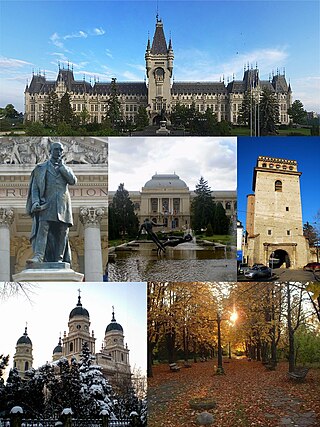
Iași, also referred to mostly historically as Jassy, is the third largest city in Romania and the seat of Iași County. Located in the historical region of Moldavia, it has traditionally been one of the leading centres of Romanian social, cultural, academic and artistic life. The city was the capital of the Principality of Moldavia from 1564 to 1859, then of the United Principalities from 1859 to 1862, and the capital of Romania from 1916 to 1918.

The culture of Romania is an umbrella term used to encapsulate the ideas, customs and social behaviours of the people of Romania that developed due to the country's distinct geopolitical history and evolution. It is theorized that Romanians and related peoples were formed through the admixture of the descendants of Roman colonists and the indigenous Paleo-Balkanic people who were subsequently Romanized.

Galați is the capital city of Galați County in the historical region of Western Moldavia, in eastern Romania. Galați is a port town on the Danube River. and the sixth largest of all cities on the Danube river. According to the 2021 census it is the 8th most populous city in Romania. Galați is an economic centre based around the port of Galați, the naval shipyard, and the largest steel factory in Romania, Galați steel works.
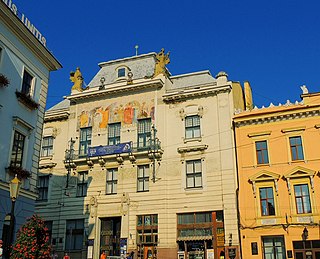
Chernivtsi is a city in southwestern Ukraine on the upper course of the Prut River. Formerly the capital of the historic region of Bukovina, which is now divided between Romania and Ukraine, Chernivtsi serves as the administrative center for the Chernivtsi Raion, the Chernivtsi urban hromada, and the oblast itself. In 2022, the Chernivtsi population, by estimate, is 264,298, and the latest census in 2001 was 240,600.
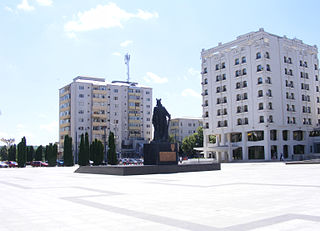
Vaslui, a city in eastern Romania, is the seat of Vaslui County, in the historical region of Western Moldavia. The city administers five villages: Bahnari, Brodoc, Moara Grecilor, Rediu, and Viișoara.
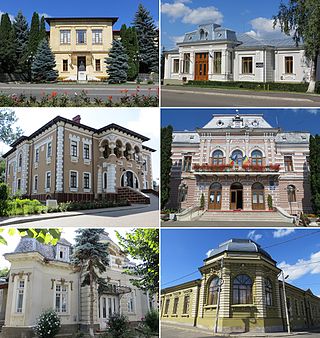
Fălticeni is a town in Suceava County, northeastern Romania. It is situated in the historical region of Western Moldavia. According to the 2021 census, Fălticeni is the third largest urban settlement in the county. It was declared a municipality in 1995, along with two other cities in Suceava County: Rădăuți and Câmpulung Moldovenesc.
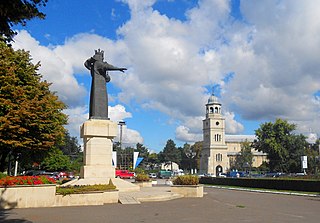
Bălți is a city in Moldova. It is the second-largest city in terms of population, area and economic importance, after Chișinău. The city holds the status of municipiu. Sometimes called "the northern capital", it is a major industrial, cultural and commercial centre and transportation hub in the north of the country. It is situated 127 kilometres (79 mi) north of the capital Chișinău, and is located on the river Răut, a tributary of the Dniester, on a hilly landscape in the Bălți steppe.

Orhei, also formerly known as Orgeev, is a city, municipality and the administrative centre of Orhei District in the Republic of Moldova, with a population of 21,065. Orhei is approximately 40 kilometres north of the capital, Chișinău.

Lipcani is a town in Briceni District, Moldova. It is also a border crossing between Moldova and Romania.
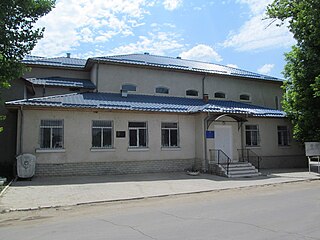
Nisporeni is a town in Moldova and the administrative center of Nisporeni District.
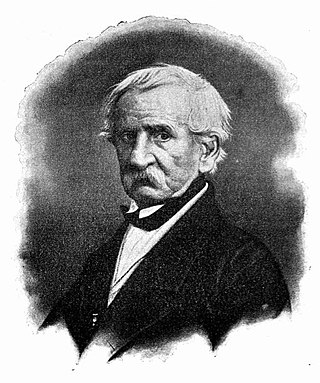
Gheorghe Asachi was a Moldavian, later Romanian prose writer, poet, painter, historian, dramatist, engineer, border maker, and translator. An Enlightenment-educated polymath and polyglot, he was one of the most influential people of his generation. Asachi was a respected journalist and political figure, as well as active in technical fields such as civil engineering and pedagogy, and, for long, the civil servant charged with overseeing all Moldavian schools. Among his leading achievements were the issuing of Albina Românească, a highly influential magazine, and the creation of Academia Mihăileană, which replaced Greek-language education with teaching in Romanian. His literary works combined a taste for Classicism with Romantic tenets, while his version of the literary language relied on archaisms and borrowings from the Moldavian dialect.
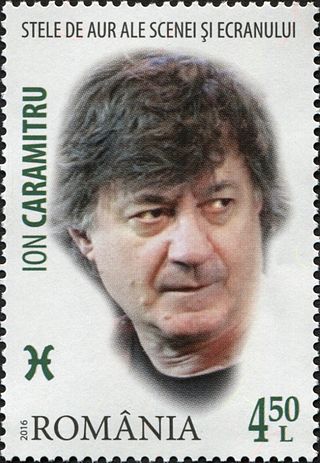
Ion Horia Leonida Caramitru, OBE was a Romanian stage and film actor, stage director, and political figure. He was Minister of Culture between 1996 and 2000, in the Romanian Democratic Convention (CDR) cabinets of Victor Ciorbea, Gavril Dejeu, Radu Vasile, Alexandru Athanasiu, and Mugur Isărescu. He was married to actress Micaela Caracaș and had three sons: Ștefan, Andrei, and Matei Caramitru. He was a relevant figure of the Aromanian community of Romania.

The National Library of Moldova located in Chişinău, Moldova is the main library of the state which is responsible for conservation, valorization and protection of written cultural heritage. The National Library operates according to the guiding principles of UNESCO referring to this type of libraries, it is part of the European Digital Library. Founded in 1940, it traces its roots to the Gubernatorial Public Library of Bessarabia established in 1832. At present, the National Library is one of the objectives with great value of the national patrimony and presents the treasure written and printed cultural heritage of the country. Library ensures wide public access to its collections for research, study and / or information. The Director General is Elena Pintilei.

Vasile Gheorghe Cijevschi was a Bessarabian and Romanian politician, administrator and writer. Originally a career officer and Orientalist in service to the Russian Empire, he was dispatched to the Far East, in Vladivostok and Khabarovsk, seeing action in the Russo-Japanese War. He was wounded and shielded from active duty, but returned with the start of World War I, managing to survive the Battle of Tannenberg. By the time of the February Revolution, he was a civil servant in Bessarabia, and an affiliate of the Octobrist Party.

Viaţa Basarabiei is a Romanian-language periodical from Chişinău, Moldova. Originally a literary and political magazine, published at a time when the Bessarabia region was part of Romania, it was founded in 1932 by political activist Pan Halippa and writer Nicolai Costenco. At the time, Viaţa Basarabiei was primarily noted for rejecting the centralism of Greater Romanian governments, to which they opposed more or less vocal Bessarabian regionalist demands and a nativist ethos.

Chișinău has a recorded history that goes back to 1436. Since then, it has grown to become a significant political and cultural capital of South East Europe. In 1918 Chișinău became the capital of an independent state, the Moldavian Democratic Republic, and has been the capital of Moldova since 1991.
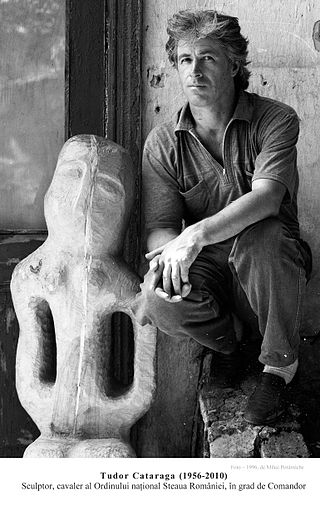
Tudor Cataraga was a sculptor from the Republic of Moldova.
The Romanian People's Salvation Cross is a monumental cross in Nisporeni, Moldova. The cross has a height of 35 metres (115 ft) and is the largest cross in Moldova.
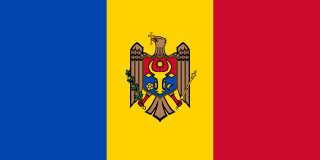
Literature of Moldova comprises the literature of the principality of Moldavia, the later trans-Prut Moldavia, Bessarabia, the Moldavian Autonomous Soviet Socialist Republic, the Moldavian Soviet Socialist Republic, and the modern Republic of Moldova, irrespective of the language. Although there has been considerable controversy over linguistic identity in Moldova, the Moldovan and Romanian languages are virtually identical and share a common literary history. Moldovan literature, therefore, has considerable overlap with Romanian literature.

Andrei Mudrea was a Moldovan painter and fine artist. He was one of Mihai Grecu's disciples. He was the creator of paintings, graphics, sculpture, and art-object works. He was the founder and member of "The group of ten". Mudrea's body of work occupies a leading position among the works of Moldovan contemporary and avant-garde art. He was the chairman and a member of various competition panels in the field of fine arts held in Chișinău.